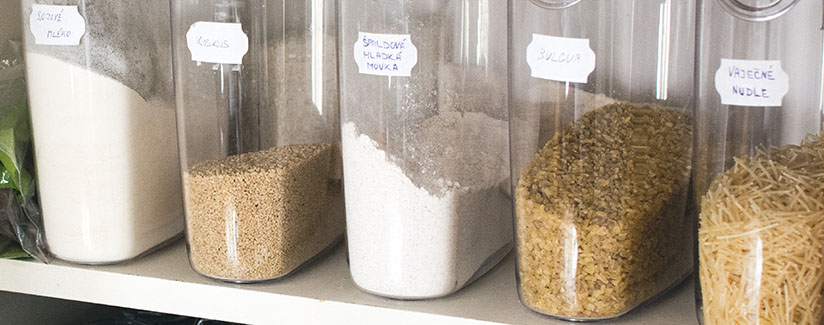
Can We Overdose on Fortified Foods?
08/26/2014
The more the merrier, right? Well, not according to the Environmental Working Group (EWG). This group recently published a report addressing fortified foods and their potential impacts on young children, the elderly and pregnant women. The report, highlighting popular vitamins and minerals, raised many questions and prompted us to dig into the truth about fortified foods. Can foods really be over-fortified? We spoke with Dr. Ruth MacDonald, Registered Dietitian and Chair of the Department of Food Science and Human Nutrition at Iowa State University.
The Takeaway: Overall, nutrition experts say overdosing is a concern that we need to pay attention to, but vitamin and mineral supplements (that we take orally in a pill or chewable form) are much more likely to be the culprit for overdosing than fortified foods.
What can you tell us about this report?
Dr. MacDonald: “Historically, foods were fortified with vitamins and minerals to address deficiencies in the population. Examples include adding iodine to salt or vitamin D to milk. Enrichment of foods has also been done to put back nutrients that were decreased by processing, including adding B vitamins and iron to white flour. But today’s store shelves are full of products that contain added nutrients to improve the quality of the foods, and to encourage consumers to buy them. So being aware of how much supplements you are consuming may be a good idea. There is potential for over-fortification, especially for children, given the wide range of foods that are being fortified, and the fact that many parents are also giving them vitamin/mineral supplements. However, whether fortified foods alone can actually create toxic levels is questionable in my view. If fortified foods are taken with supplements, especially by kids, then there could be a concern.”
Dr. MacDonald suggested we reach out to Dr. Victor Fulgoni, a consultant with Nutrition Impact, LLC. Here’s what Dr. Fulgoni had to say:
Dr. Fulgoni: “Frankly, this report has not considered the issues with the estimated average requirements of certain nutrients, especially Upper Limits (the highest average daily nutrient intake level that is likely to pose no risk of adverse health effects to almost all individuals in the general population). The main issue is how to maximize meeting nutrient needs, while not having too many people exceed the Upper Limits. And, it’s important to note we do not know the risk of nutrient intake above the Upper Limits.”
The report says that nearly half of American kids age eight and younger consume potentially harmful amounts of vitamin A, zinc and niacin because of excessive food fortification, outdated nutritional labeling rules and misleading marketing tactics used by food manufacturers. Is this true?
Dr. MacDonald: “It’s a possibility. It’s a fact that there is more fortification of foods and beverages than there used to be, and people take more supplements that have a wide range of nutrients and other botanical/biologically active compounds.”
According to WebMD, Louise Berner, PhD, a professor of food science and nutrition at Cal Poly State University whose research is cited in the EWG report, questions the report’s conclusions.
Dr. Berner: “I agree that excessive or indiscriminate fortification, particularly along with the indiscriminate or unneeded use of supplements, is a potential issue of concern, but the EWG report is worrisome to me in several respects.”
Berner explained that the EWG report doesn’t address ‘tolerable upper intake level’ or UL. UL is the highest level of nutrients our bodies can take, without the risk of harm. Berner noted two additional challenges with the report: it “selects data and summarizes findings out of context” and “mischaracterizes the main message of our published data as I interpret them.”
Why do food companies fortify foods?
Dr. Berner’s research shows that fortified foods, mainly enriched grains, breakfast cereals, milk and juice, play an important role in ensuring that children get adequate amounts of many nutrients.
Is it possible to overdose on vitamins through fortified foods or supplements?
Per Dr. Berner, supplement use, and not fortification, seems to be “the major driver of potentially high [nutrient] intakes.”
Dr. MacDonald: “Yes, that is always a possibility, as some vitamins and minerals can be toxic in high doses. While overdosing is possible, people are much more likely to overdose by taking supplements than simply by eating fortified foods. As it relates to the specific vitamins and minerals cited in the EWG report,
- Vitamin A toxicity can occur if the vitamin is consumed in the active form of retinol or retinal, but not when in the pro-vitamin A form Beta-carotene (this form of Beta-carotene is found in carrots and orange vegetables, and has to be converted to be used as vitamin A in the body) – so you need to know what form is in the food by reading the ingredient label.
- Zinc is a mineral that is poorly absorbed, in general. Our bodies adapt the amount that is absorbed depending on how much is already present. For example, if we have low levels of zinc, our body will absorb more; if we have higher levels, our body will absorb less. So with zinc, overdosing from food is probably not likely, but overdosing could occur if there is a high dose taken in a supplement. The difference between food and supplement is the overall dose at one time – if you absorb 50% of 10 grams, that is less than 50% of 100 grams. Percent of absorption is the same, but the overall amount is more.
- Niacin is a water-soluble vitamin and is usually excreted in the urine when too much of it is in our bodies. It is important to note that if taken in high doses, for example, as a drug to regulate blood pressure, then it will have biological effects.
A good rule of thumb is to not consume supplements or fortified beverages/foods that contain greater than 200 times the recommended daily value of any nutrient. And to monitor supplement intake when consuming highly-fortified foods, such as energy drinks.”
To learn more about food fortification, please visit the FDA’s fortification policy site.


























